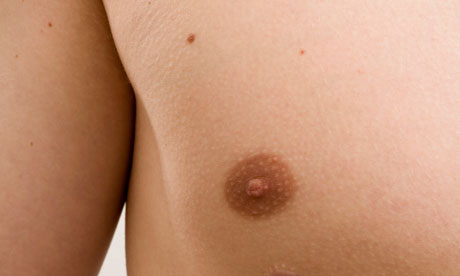
Medical school is a treacherous place for a hypochondriac and it took me a while to realise that I couldn't afford to dread every single disease I learned about. One of my silliest scares occurred while studying the pathology of the breast and nipple.
The nipple protrudes from the centre of the breast and delivers milk, made in the mammary glands, to babies. It is also an erogenous zone. In the female, the nipple contains outlets from 15 to 20 lactiferous ducts, arranged cylindrically around its tip. The pigmented circle of skin around the nipple is known as the areola, and the small bumps which decorate it Montgomery's tubercles.
During foetal development, several nipples develop along what are known as the "milk lines" which run on each side, from chest to groin. If more than two of these persist, the extras are called supernumerary nipples. In other mammals, the number of nipples a female is born with tends to dictate the maximum size of any litter she might produce.
The nipple may behave abnormally in a variety of ways. Some don't stick out properly, which is known as inversion. Non-lactation related discharge may indicate a number of ills, including a tumour of the pituitary gland called a prolactinoma. Babies may even produce milk for a short time after birth ("witch's milk") because of the effect on their bodies of maternal oestrogen.
But the most serious condition to affect this part of the body is Paget's disease of the nipple. Commonest in menopausal patients (although it may also affect men and young women), it announces itself with itching, sore or cracked nipples, often accompanied by a bloody discharge. Paget's is malignant and, though it is sometimes confined to the nipple area, it usually signals the existence of underlying breast cancer. It is easy to diagnose with a tissue biopsy, although the problem is that people tend to seek help late for Paget's because they think they only have eczema. Treatment is with surgery.
The tiny lesion I noticed while dressing, and over which I fretted melodramatically, turned out to be nothing more than a benign spot called a molluscum contagiosum, probably picked up in the local swimming pool. It would unfortunately take me several other such episodes before I was able to kick this medical neurosis into touch.

